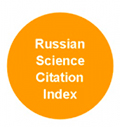Рецензия на монографию «Российский рынок труда через призму демографии»
Аннотация
В монографии «Российский рынок труда через призму демографии» (написанной до начала пандемии) представлено обширное комплексное исследование взаимосвязи демографических процессов как текущих, так и прошлых с рынком труда в России и в зарубежных странах. Также в книге приводится ряд прогнозов, которые, как выясняется, в настоящий момент по большей части исполняются (при том, что авторы не закладывали в них «шоков», которые случились в начале 2020-х). В рецензии представлен не только обзор содержания книги, но и ссылки на работы, подготовленные авторским коллективом после выхода ее в свет.
Скачивания
Литература
Бирюкова С.С., Макаренцева А.О. (2017). Оценки «штрафа за материнство» в России. Население и экономика, 1(1), 50-70. https://doi.org/10.3897/popecon.1.e36032
Вишневская Н.Т., Гимпельсон В Е., Денисова И.А., Зудина А.А., Капелюшников Р.И., Лукьянова А.Л., Шарунина А.В. (2020). Российский рынок труда через призму демографии. Москва: Изд. дом ВШЭ. – 440 с. https://doi.org/10.17323/978-5-7598-2167-0
Вишневский А.Г. Демографическая революция (2005). В Вишневский А.Г. Избранные демографические труды: в 2 т. (т.1., сс. 5-214). М.: Наука. https://www.demoscope.ru/weekly/knigi/vishnevskij/vishnevskij.html
Денисенко М.Б., Козлов В.А. (2018). Межпоколенческие счета и демографический дивиденд в России. Демографическое обозрение, 5(4), 6-35. https://doi.org/10.17323/demreview.v5i4.8661
Калабихина И.Е., Кузнецова П.О., Журавлева С.А. (2024). Размер и факторы материнского штрафа на рынке труда: мета-анализ. Население и экономика, 8(2), 178-205. https://doi.org/10.3897/popecon.8.e121438
Мальцева В.А., Шабалин А.И. (2021). Не-обходной маневр, или Бум спроса на среднее профессиональное образование в России. Вопросы образования, 2, 10-42. https://doi.org/10.17323/1814-9545-2021-2-10-42
Назарова А.Г., Чернявский А.В. (2019). Агрегированные трансфертные счета для Российской Федерации: основы построения и анализа. Вопросы статистики, 26(4), 32-44. https://doi.org/10.34023/2313-6383-2019-26-4-32-44
Bloom D.E., Luca D.L. (2016). The Global Demography of Aging: Facts, Explanations, Future. Handbook of the Economics of Population Aging, Vol. 1A., 3-56. Amsterdam: Elsevier. https://doi.org/10.1016/bs.hespa.2016.06.002
Bloom D.E., Sousa-Poza A. (2013). Ageing and Productivity: Introduction. IZA Discussion Papers,7205. Bonn: IZA. http://dx.doi.org/10.2139/ssrn.2219130
Chernina E., Gimpelson V. (2023). Do wages grow with experience? Deciphering the Russian puzzle. Journal of Comparative Economics, 51(2), 545-563. https://doi.org/10.1016/j.jce.2023.01.005
Fallesen P., Andersen L.H., Elwert F. (2024). Heterogenous causal effects: Potentials and pitfalls as illustrated with fatherhood and earnings. Journal of Marriage and Family. https://doi.org/10.1111/jomf.13018
Gimpelson V.E., Zinchenko D.I., Chernina E.M. (2023). Wage premium in STEM careers. Voprosy Ekonomiki, 11, 28-50. https://doi.org/10.32609/0042-8736-2023-11-28-50
Gimpelson V.E., Zinchenko D.I. (2019). «Cost of getting older»: Wages of older age workers. Voprosy Ekonomiki. 11, 35-62. https://doi.org/10.32609/0042-8736-2019-11-35-62
Gregg P., Wadsworth J. (2008). Two Sides to Every Story: Measuring the Polarization and Inequality in the Distribution of Work? Journal of the Royal Statistical Society, 171, 857-875. https://doi.org/10.1111/j.1467-985X.2008.00542.x
Lagakos D., Moll B., Porzio T., Qian N., Schoellman T. (2018). Life Cycle Wage Growth across Countries. Journal of Political Economy, 126(2), 797-847.https://doi.org/10.1086/696225
Lee R. (2003). The Demographic Transition: Three Centuries of Fundamental Change. Journal of Economic Perspectives, 17(4), 167-190. https://doi.org/10.1257/089533003772034943
Lee R. (2014). How Population Aging Affects the Macroeconomy. Re-Evaluating Labor Market Dynamics. Jackson Hole Symposium. Federal Reserve Bank of Kansas City Economic Conference Proceedings, 261-283. https://www.kansascityfed.org/documents/4543/2014Lee.pdf
Lee R., Mason A. (2010). Some Macroeconomic Aspects of Global Population Aging. Demography, 47, Supplement, 151-172. https://link.springer.com/article/10.1353/dem.2010.0002
Sanderson W.C., Scherbov S. (2008). Rethinking Age and Aging. Population Bulletin, 63(4), 1-16. https://globalag.igc.org/elderrights/world/2009/demographics.pdf
Sanderson W.C., Scherbov S. (2010). Remeasuring Aging. Science, 329(5997), 1287-1288. https://doi.org/10.1126/science.1193647
Sundberg A. (2024). The child penalty in Sweden: evidence, trends, and child gender (No. 2024: 12). IFAU-Institute for Evaluation of Labour Market and Education Policy. https://www.ifau.se/en/Research/Publications/Working-papers/2024/the-child-penalty-in-sweden-evidence-trends-and-child-gender/
Weil D. (1997). The Economics of Population Aging. In M. Rosenzweig, O. Stark (Eds.), Handbook of Population and Family Economics. Amsterdam: North Holland. https://doi.org/10.1016/S1574-003X(97)80009-8
Xu Q. (2023). From fatherhood premium to motherhood penalty: trends in the fertility effects on men's and women's wage in China (1989–2015). The Journal of Chinese Sociology, 10(1), 20.https://doi.org/10.1186/s40711-023-00199-0
Zheng Q., Qiu Z., Yang W. (2024). The shifting motherhood penalty and fatherhood premium in China's gig economy: Impact of parental status on income changes. International Labour Review, 163(2), 173-197. https://doi.org/10.1111/ilr.12407
























